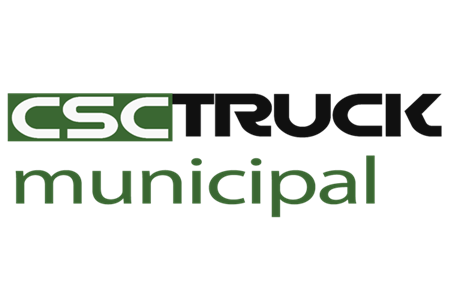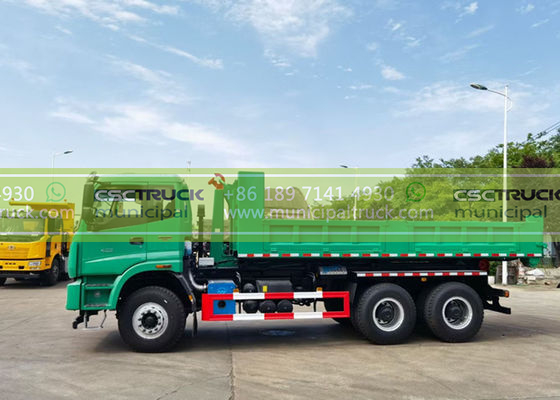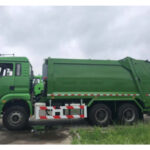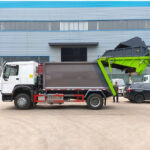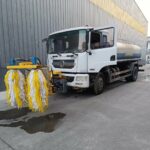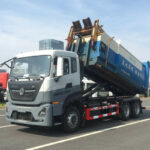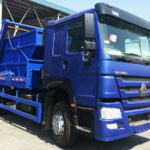The Core Mechanism – Divergent Designs Dictating Operational Tempo
The fundamental difference between hook loader and skip loader garbage trucks lies in their loading and transfer methodology, setting the stage for distinct speed profiles. Hook loader systems utilize a powerful hydraulic boom assembly to engage, lift, and transport entire standardized containers (often roll-offs or compactors). The waste remains contained within the dedicated bin throughout handling and transport. Conversely, skip loaders (often mounted on traditional rear loader chassis) employ hydraulic arms and a hopper to lift and tip individual, smaller front-end loading (FEL) containers directly into the truck’s enclosed compaction body for processing and storage. This mechanical dichotomy – whole-container exchange versus individual bin tipping and compaction – is the primary engine driving differences in transfer speed potential. While hook loaders excel in moving large volumes via container swaps, skip loaders focus on efficiently servicing numerous smaller collection points, making their speed advantages context-dependent and heavily influenced by specific operational parameters.
Quantifying Container Exchange – Where Hook Loaders Achieve Velocity
When evaluating the raw speed of transferring a large quantity of waste from a stationary point to the disposal site, hook loader systems often demonstrate superior efficiency due to their integrated container handling.
- Bulk Transfer Efficiency: The core advantage of a hook loader lies in its ability to handle pre-filled containers. For large waste generators (construction sites, industrial facilities, transfer stations, multi-family complexes with large compactors), the waste is loaded into a dedicated container before the truck arrives. The hook loader operation itself – engaging the container, hoisting it onto the truck chassis, securing it, and departing – typically takes 5-10 minutes. This represents the transfer of the entire container’s volume (ranging from 10 to 40+ cubic yards) in a single, swift exchange. There’s no on-site processing time.
- Minimized On-Site Processing: Unlike skip loaders, hook loaders perform zero compaction at the collection point. The compaction (if applicable) happened during the filling of the container at the generator’s pace. This eliminates the significant time required for a skip loader to lift, tip, and compact each bin load sequentially. For transferring a pre-accumulated 30-yard load, the hook loader’s swift container swap is vastly faster than a skip loader needing multiple bin lifts and compaction cycles to handle the equivalent volume.
- Direct Haul Advantage: Once the container is secured, the hook loader truck functions purely as a hauler. There is no intermediate dumping required before reaching the final disposal site (landfill, processing plant). This direct haul capability maximizes route efficiency for bulk transfers over longer distances.
The Collection Cadence – Skip Loaders Dominate Multi-Stop Throughput
While hook loaders win on bulk transfer, skip loaders are engineered for high-frequency collection stops, achieving speed through optimized bin servicing and on-board processing.
- Rapid Bin Servicing: Skip loaders shine in scenarios demanding numerous collection stops, characteristic of commercial waste routes (restaurants, retail strips, offices). The individual bin cycle time – positioning the truck, grabbing the container, lifting, tipping, compacting, and returning the bin – is highly optimized on modern skip loaders. Experienced operators can complete a cycle in 60-90 seconds per container. This rapid cycle allows them to service many locations quickly within a concentrated area.
- Integrated Compaction: The compactor garbage truck nature of the skip loader’s body is crucial to its multi-stop efficiency. As each bin is emptied, the waste is immediately compacted within the truck’s body. This maximizes payload capacity during the route, allowing the truck to service far more locations before becoming full than a non-compacting truck could. This on-the-go densification translates directly into fewer trips to the disposal site per tonne collected, improving overall route velocity.
- Minimized Container Dependency: Skip loaders require only standardized FEL bins at the customer site, a near-ubiquitous infrastructure. They don’t depend on the generator possessing or managing a large roll-off container. This eliminates the need for the truck to transport an empty container to the site or schedule separate container drop-off/pick-up, streamlining the dedicated collection route.
Key Determinants of Relative Transfer Speed – Beyond the Truck Type
Declaring one system universally “faster” is misleading; transfer speed superiority depends heavily on specific operational variables:
- Volume per Location: Is the waste concentrated at a few points in large volumes (favoring hook loader container exchange), or dispersed across many locations with smaller volumes per bin (favoring skip loader rapid cycling)? A single 30-yard roll-off container swap vs. emptying thirty 1-yard bins illustrates the stark difference.
- Container Availability & Prep: Hook loader speed advantage hinges on pre-filled containers being ready and accessible upon truck arrival. Delays caused by containers not being full, blocked access, or needing repositioning negate the speed benefit. Skip loaders are less susceptible to per-location delays unless a specific bin is inaccessible.
- Distance Between Points / Haul Distance: For clustered stops (e.g., a downtown commercial strip), the skip loader’s fast cycling minimizes time wasted driving short distances between bins. For long hauls between dispersed bulk generators or to distant landfills, the hook loader’s ability to transfer large volumes quickly and haul efficiently dominates. Long on-site processing times kill skip loader efficiency for isolated large loads.
- Site Constraints & Access: Tight urban alleys, low-hanging wires, or congested sites can impede the maneuvering required for hook loader container swaps. Skip loaders, often more maneuverable due to their traditional truck chassis and smaller operational footprint, can navigate these spaces more easily, maintaining collection speed where a hook loader might be delayed or unable to operate.
Transfer Station Synergy – Amplifying Hook Loader Throughput
Hook loader systems achieve peak transfer velocity when integrated strategically with waste transfer stations. In this model, hook loader trucks collect filled roll-off containers from generators and transport them intact to a centralized transfer station. At the station, the containers are efficiently unloaded (often using dedicated station equipment) and their contents are consolidated into vastly larger trailers for long-haul transport to distant landfills. Here, the hook loader’s speed advantages multiply:
- The rapid container exchange minimizes truck dwell time at both the generator and the transfer station.
- By transporting densely packed containers (especially if using compactor garbage truck containers), hook loaders maximize payload per trip to the transfer station.
- The transfer station acts as a throughput multiplier, enabling numerous hook loader trucks servicing local generators to feed into fewer, highly efficient long-haul vehicles. This system leverages the hook loader’s bulk transfer speed locally while optimizing the final haul economics.
Strategic Fleet Integration – Balancing Speed, Cost, and Service for Municipal & Private Operators
Selecting between hook loader and skip loader systems, or integrating both, requires a strategic analysis of service territory needs and cost structures. For municipal truck fleets handling diverse waste streams, the calculus is complex. Municipal Solid Waste (MSW) collection from residential areas and smaller businesses typically demands the multi-stop agility and compaction efficiency of skip loaders to manage high stop density cost-effectively. However, municipalities also manage bulk drop-off sites, parks, special collections, and potentially transfer stations. Here, hook loaders become essential for the rapid transfer of large volumes from strategically placed roll-offs or compactors. Private waste companies face similar decisions based on their contracted services – a company specializing in construction debris will heavily favor hook loaders, while one focused on strip mall collection relies on skip loaders. Ultimately, the lowest cost per tonne collected and transported is the true measure of efficiency. This often involves leveraging the rapid bulk transfer speed of hook loaders for concentrated large loads and transfer station operations, while deploying the high-frequency collection speed of skip loaders for dispersed commercial and potentially large residential routes. The most sophisticated fleets deploy both technologies strategically, maximizing transfer speed and operational efficiency across their entire service spectrum.
